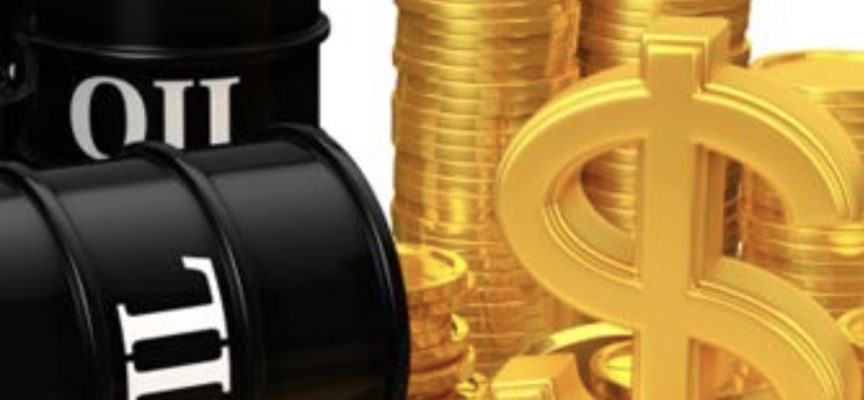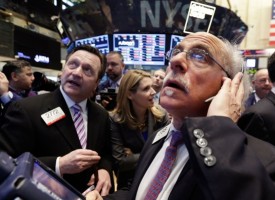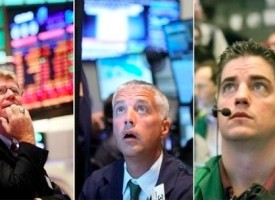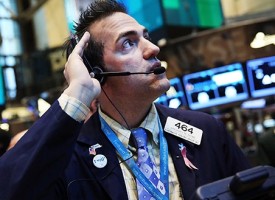The following is a must read about gold in a world of a surging US dollar, interest rates and inflation.
The End of Dollar Hegemony
July 15 (King World News) – John Ing: In 1944, the West came together at Bretton Woods and established the economic and financial framework for the postwar era. They provided the basis for institutions and the West prospered led by America. That monetary orthodoxy lasted until 1971, when President Nixon devalued the dollar by abandoning the gold standard which was the collapse of Bretton Woods and the US dollar. The gold peg, fixed at $35 per ounce was the benchmark for Bretton Woods’ fixed exchange rates. Post 1971, the US was an economic and financial superpower as the global monetary and financial order benefited from the dominant position of the US dollar which remains the world’s reserve currency as other currencies “float” against the dollar. We believe that position should not be taken for granted as the world’s currency system is built on a foundation of a fiat currency backed by the “full faith and credit” of the US government.
Since America went off the gold standard, the thrust of US policy was to boost growth, asset prices and consumption but on borrowed money. They succeeded. Never in history has there been more money printed in the world unleashing a tsunami of debt and since then, there have been a series of currency crises, booms and busts, new currencies (EU) and in 1985, the dollar was devalued again. And 50 years later, misadventure and instability persists in a return of the “stop-go” policies of the 1970s and 1980s that boosted inflation, leverage, devaluations and recessions. Noteworthy is that the dollar’s share of global trade has declined while dollar liabilities have increased which is the structural weakness of the world’s leading currency as it raises the risk of all those fiat dollar’s flooding back to America.
Yet today the dollar is trading at its highest level in 20 years as a safe-haven as higher rates offer the promise of higher returns, attracting foreign money. This causes a problem as the US economy also imports inflation from overseas. And while it makes imports cheaper, America’s exports have been weak with Microsoft reducing its guidance blaming the stronger dollar. Meantime other central banks are raising rates at a faster pace. The Euro is now at par for the first time since 2002 helping exporters but hurting energy imports. Chinese exports jumped nearly 18% led by exports to the US and Southeast Asia. China has slowly internationalized the renminbi with a recent swap arrangement with the Bank of International Settlements (BIS). Currently China’s international framework has allowed China and Russia to avoid US sanctions and there are talks of setting an alternative basket reserve currency among BRIC members, bypassing the American financial system as a multi-polar currency system evolves following the confiscation of Russia’s foreign currency reserves.
In The Dollar We Trust?
Deficits borrow from the future. Back in 1977, inflation was 6.5%, the national debt was 34% of GDP. The last financial crisis in October 2009 was the biggest financial crisis since the Depression and to save Wall Street, the world’s bankers convened an emergency meeting in Washington to do “whatever it takes”. Subsequently central banks began unlimited purchases of government debt and a meltdown was avoided but at great cost. Since then, to solve crises including the pandemic stimulus, G-7 central banks have purchased or created more than $25 trillion of government bonds, avoiding another depression. But debt has been monetized. And today with the Ukraine bills not yet in, federal debt has skyrocketed from one third of GDP in 2008 to 130% of GDP today. June inflation was 9.1%, a 40-year high, as America spends more money that they do not have, another big boost to inflation.
A greater irony is that when the Fed raises rates, the market value of its assets will fall potentially below the face value of their assets, leaving the central bank to need help. The Fed’s balance sheet will fall, for the wrong reason. For example the Fed holds some $2.7 trillion holdings of bonds and promised sales would swamp the $5.5 trillion bond market which supports the US mortgage industry. That would leave the Fed with major losses, risking a downward spiral in bond prices and worse, pushing up yields and the collapse of the all- important housing market. Concerns about high inflation and the Fed’s failure to act weighs heavily on foreign sentiment and trust. Central banks hold dollars in their reserves and their holdings of US debt have declined this year producing big losses and a disincentive to hold dollars.
A two-decade decline in rates made debt levels superfluous since borrowing costs were minimal. However the cost of debt is about to rise and the bills are only just coming in. At fiscal year end September 21, the US debt interest cost was $573 billion, but today debt to service is estimated at $863 billion, larger than military spending of $746 billion and medicare spending of $700 billion – and that is before next month’s increase which will increase the carrying cost of American debt to over $1 trillion. Who then will buy America’s debt?
The US must keep rates high to attract money, but it hurts their economy. Given the United States’ reliance on foreign capital to finance its large twin deficits, any reduction in foreign flows would find the Fed itself needing others to support America’s debt. Today, Americans are told their economy is the strongest. It is illusory. The structural weakness is that their economy and currency are built on debt. America’s economic, racial and cultural gaps have caused an ideological polarisation undermining American influence and democracy itself. Even after the invasion, Russia’s economy supports a debt-to-GDP ratio of only 20%, China’s ratio is 68%. The United States’ ratio is 130%, and still rising. Today America is in denial and no one wants to confront their unsustainable national debt. Today’s high rate of inflation is simply foreshadowing of what is to come as the US monetize its national debts. This is what is happening in Türkiye today. By printing ever increasing amounts of money to finance the national debt, the Fed lost control of America’s monetary orthodoxy, debasing its currency. It is not so different this time. A crash is looming.
Gold Is an Alternative to the Dollar
Gold on the other hand has skyrocketed from $32/oz to over $2,000/oz two years ago. For thousands of years gold has shown that it is difficult to be manipulated nor can it be created with a click like QE or MMT. Governments cannot rely on QE alone and instead of taking the necessary structural reforms to solve our problems, have pursued the experimental policies that led to the inflation problem of today.
Today, we believe America’s dollar hegemony has ended with new challenges in this inflationary era. For one thing threats of higher inflation, the protracted war, central bank purchases and a commodity supercycle provide a solid underpinning to gold. Gold is simply a hedge against the growing uncertain global outlook and a classic inflation hedge against the dollar devaluation.
Gold historically has done well in periods of turmoil but lately its performance has been disappointing. Gold’s non-performance is frustrating investors as sentiment shifts downwards with investors withdrawing $1.7 billion from ETFs last month. Nonetheless central banks keep buying gold as an alternative to the dollar. While gold earlier made an attempt at new highs, it has drifted near $1,700 on fears of higher rates and a stronger dollar. Gold often acts inversely to the dollar.
Today gold is stuck in a trading range frustrating both traders and investors. Yet in the last quarter, gold has not gone down as much as bonds, stocks or bitcoin. With the S&P bond index off 8%, the S&P 500 more than 20%, crypto plunging 75%, gold was largely unchanged, outperforming everything. Priced in euros, Europeans have seen the price of gold go up 7% in the same period.
We can recall that higher interest rates are actually bullish for gold. During the 1970s, from 1971 to 1974 the Fed boosted interest rates from 3.75% to 13% and gold soared from $35/oz to over $180/oz. And from 1977 to 1980, rates went from 4.75% to over 20% and gold rose from $142/oz to a new record high at $870/oz. Then in the 2001-2011 bull market, gold jumped to $1910/oz. As a store of value gold has always surpassed its previous peak and does well, particularly in times of high inflation like the 70s when easy monetary and fiscal policies and a surge in oil prices led to near hyperinflation. As such we continue to expect gold to reach $2,200/oz. This bull market has only just begun.
© 2022 by King World News®. All Rights Reserved. This material may not be published, broadcast, rewritten, or redistributed. However, linking directly to the articles is permitted and encouraged.







